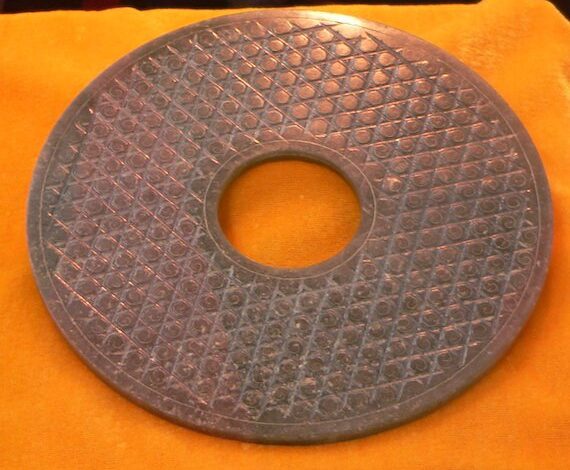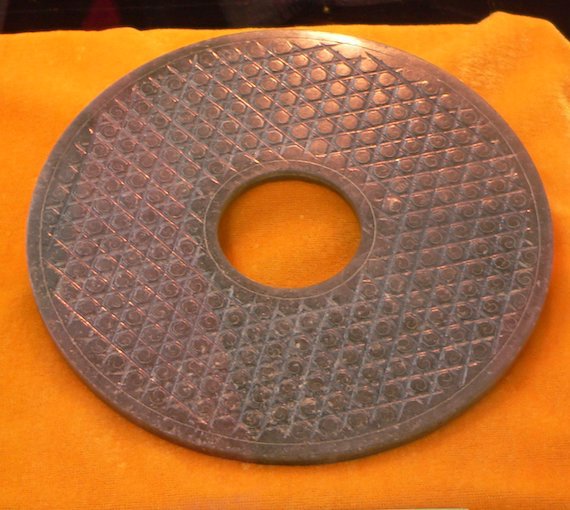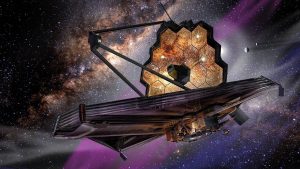The Mystery of the Dropa Stone Discs

Throughout the history of archeology we have been digging up some weird stuff. There often are found discoveries that raise eyebrows at the very least or even go as far as to challenge what we think we know about history. Such findings can often become quite controversial and debated, with much speculation on what is really going on, and they can throw the history we think we know into disarray. One of these must certainly be a series of strange, disk-like objects unearthed in China, whose place in history and indeed whose very existence remains disputed and discussed.
One such perplexing and controversial discovery was allegedly made in 1938 in the Baian-Kara-ula mountains on the border of China and Tibet, by Chinese archeologist and professor Chi Pu Tei. His expedition purportedly came across an underground network of tunnels, caves, and caverns that seemed to have been artificially excavated, leaving smooth glazed walls suggesting some immense heat had been used. Tei claimed that within this strange subterranean world they had found pictograms carved into the walls, which depicted star systems, the sun, and the moon, and even more bizarrely graves that supposedly held the remains of tiny humanoids measuring about 4 feet tall and with outsized heads. Perhaps even stranger were the objects they found half buried in the earth all around them.
The objects in question were a series of over 700 perfectly circular discs measuring up to a foot across, and which were said to have two grooves that emanated out from a perfectly round, 3/4″ hole in the center to form a double spiral. Within the spirals were claimed to be minuscule hieroglyphics of an unknown type, so small that they were barely visible to the naked eye, and which required a magnifying glass to make out in any significant detail. In some regards they were similar to bi, which are flat jade discs with a circular hole in the center from ancient China, some of which bear ornate carvings. Bi were often ceremoniously buried with the dead, and were also used in worship and ceremony from Neolithic times all the way through the Shang, Zhou and Han dynasties.

However, these were different than any other type of bi ever seen before, and with their strange hieroglyphics, size, and the alleged presence of those small humanoid beings they were seen as quite the anomaly. Yet although this would have been seen as a monumental, groundbreaking archeological discovery, the discs allegedly found themselves locked away in storage at Beijing university for decades until 1962, when Chinese archeologist Tsum Um Nui supposedly took a look at them and the story would get even more bizarre still. After careful analysis of the discs, this Tsum Um Nui claimed that he had actually managed to decipher them, and that they told an epic tale and often tragic tale of visitors from the stars. According to Nui, the discs spoke of a spaceship that had crashed into the mountains carrying a contingent of alien beings called the Dropa. The crash smashed the ship beyond their ability to repair, and so these mysterious beings had been forced to find refuge in the mountains and adapt to life on Earth, creating the tunnels and caverns in the process. The discs even supposedly give the harrowing account of some of these Dropa being mercilessly slaughtered by the Han Chinese.
If it all sounds completely absurd, the general scientific community agreed, refusing to publish Nui’s paper on the matter and generally looking upon his claims with raised eyebrows and even outright disdain. According to some accounts, the archeologist was even forbidden from even talking about the discs anymore after that, but the whole weird tale caught the attention of Russian scientist W. Saitsew, who apparently acquired some of the discs and studied them himself in 1968. Saitsew allegedly found the composition of the discs to be quite odd, comprised of a strange mix of cobalt and other metals that made the surface nearly impenetrably hard and deepening the mystery of the hieroglyphs etched upon them. He also claimed to have discovered that when placed on a specialized turntable the discs hummed and oscillated as if they had once held an electrical charge or served as conductors of some type.
It is unclear what happened to what have come to be known as the Dropa Discs after this, and Tsum Um Nui himself allegedly fled China to Japan, where he vanished into obscurity. We are left with very little to go on, and indeed there is much to cast doubt on whether the Dropa Discs ever even existed at all. For one there are no discs now to examine, with the estimated 712 discs all allegedly disappearing over the years. There is also rather suspiciously a lack of any photographic documentation of them at all. The only supposed photographs of the Dropa Discs were purportedly taken by the Austrian engineer Ernst Wegerer, who apparently located two of the discs during a visit to the Banpo Museum in Xi’an, Shaanxi Province in 1974. However, the photographs are fairly controversial and the discs themselves are obscured by camera flash.

Other damning evidence against the existence of the Dropa Discs is that there are no real official scientific papesr written on them, with only the writings of Tsum Um Nui, the Russian scientists, and some second or third hand accounts to go on, and these are of questionable veracity at best. In fact, Tsum Um Nui appears to have no mention in any university or academic institution as an archeologist, and indeed it has been pointed out that Tsum Um Nui isn’t even a real Chinese name at all. There are likewise no official museum records to show that such discs were ever within their collections, nor is there any official documentation of the Chi Pu Tei expedition that supposedly found them in the first place, and indeed there is no way to know if it ever happened at all. Considering such a lack of any concrete evidence, if the Dropa Discs ever did exist then the Chinese have gone through great efforts to cover it all up. Perhaps more likely is that this is an intriguing archeological urban legend that has sort of taken up a life of its own. Regardless, these mysterious discs crafted by unknown hands have continued to be discussed and debated to this day.
What are these things? Were they ever even real at all? If they were, then what were they for and who or what made them? It is unfortunte that, like many strange discoveries like this we are left without any real evidence for any of it. All we have to go on are these accounts and some blurry pics, with the actual disks’ location or even existence an unknown.




